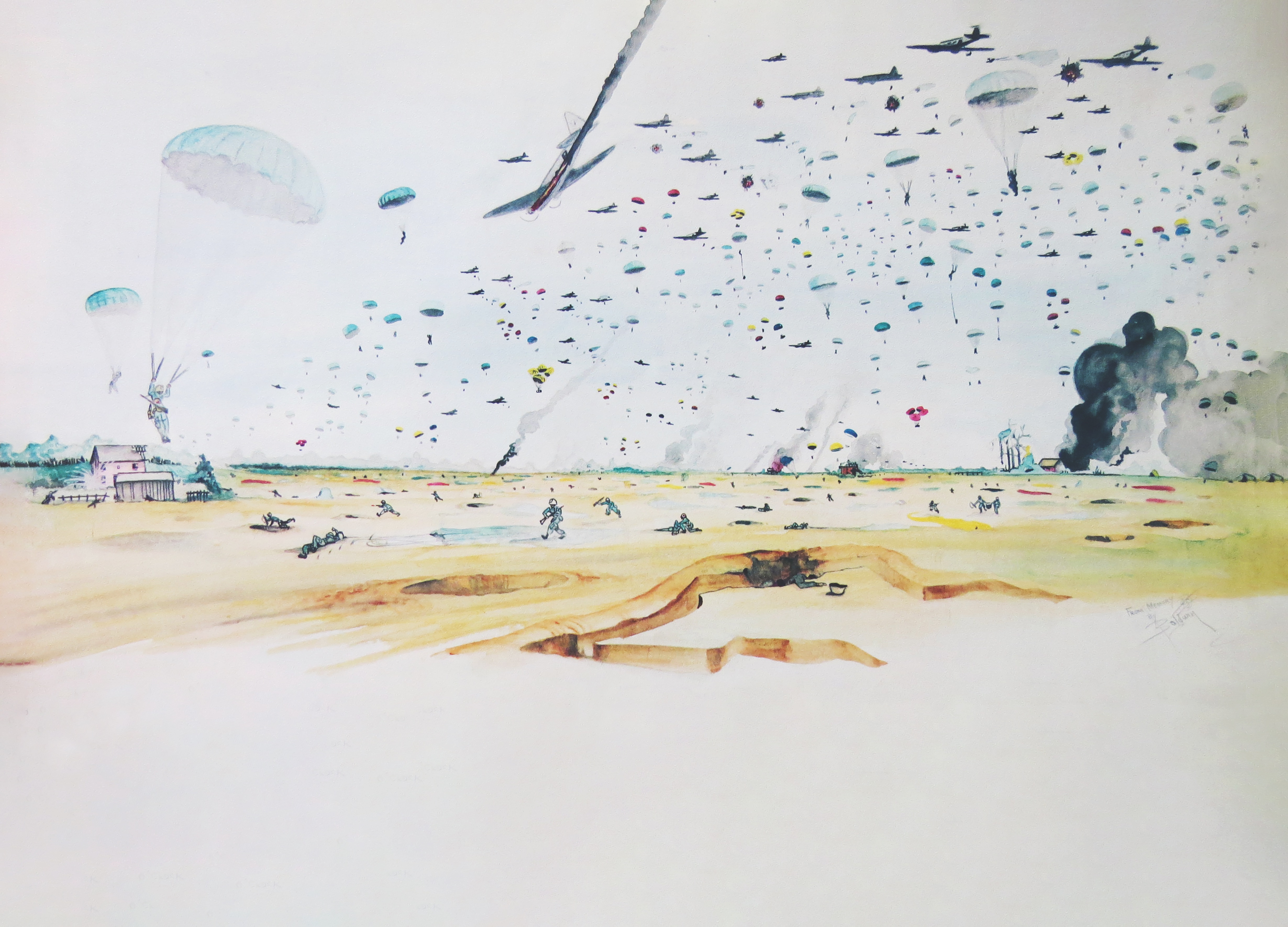Robert Baldwin gained two Bronze Stars and a lifetime’s worth of inspiration after serving with the 507th Parachute Infantry Regiment in Germany.
ROBERT M. BALDWIN’S life changed forever a few minutes after 10 a.m. on March 24, 1945. The 20-year old’s parachute had just jerked open, and what he witnessed in the few seconds before hitting the ground became seared into his memory: dozens of C-47s droning overhead as his regiment jumped into Germany, flak bursting in black clouds of shrapnel. Surrounding him were the chutes of his comrades; below him was a hornet’s nest of Germans making a last-ditch effort to repel the Allies. Then a blast rocked Baldwin from below. Where his platoon sergeant had been a moment earlier was a drifting, empty parachute. An antiaircraft shell had ignited explosives carried by the sergeant, disintegrating him in an instant.
Baldwin didn’t have long to contemplate the tragedy. Crashing to earth, he crumpled under the weight of his equipment and, finding himself in a melee of bullets and mortar fire, struggled to get out of his chute. He joined his company for the successful seizure of their objective—but the day’s sights and sounds made a lasting impression. Even the smell was notable. Writing to his mother, he confessed, “It’s funny, when death is so near one can actually smell it. It may be my imagination, but the minute I got over the first shock of the jump that nauseating odor hit me.”
With watercolors and a sketchbook he “liberated” from a house near the drop zone, Baldwin recreated what he’d seen that day, as well as sights from the next few weeks as he, with the 507th Parachute Infantry Regiment, fought toward the town of Münster. Several times Baldwin complied with orders from his company commander, Captain Howard “Big Steve” Stephens, to “throw that damned book away!” only to slyly recover it from the trash each time. For Baldwin, Germany’s beauty was in the past: everything in the Reich was in ruin or covered in ash.
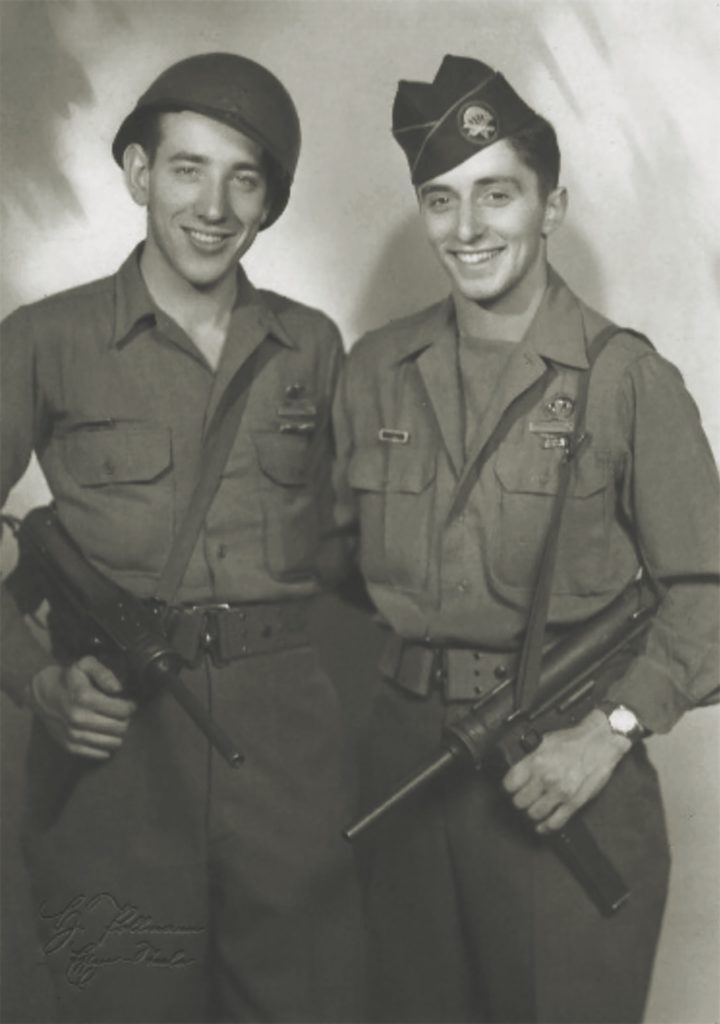
Discharged in 1946 with two Bronze Stars, he settled in New Jersey to raise a family and launch a successful career as a commercial artist. His World War II service stayed with him, and much of his personal art is military-themed. He completed his most enduring tribute at Fort Benning, Georgia, in 1985: “The Airborne Walk,” a series of concrete paths in the shape of jump wings leading visitors by 28 monuments dedicated to airborne units of the past.
Recalling the dramatic day he jumped into Germany, Baldwin later admitted, “How I made it I’ll never know.” He lived to the age of 78 and passed away in December 2003. ✯
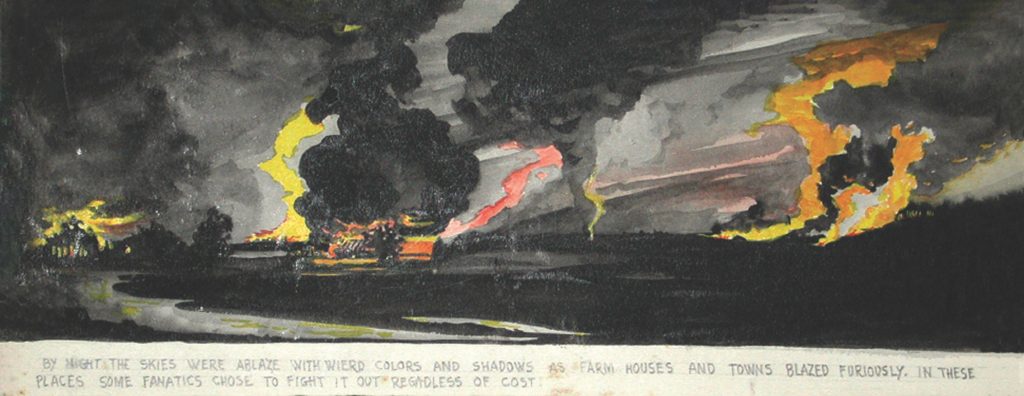
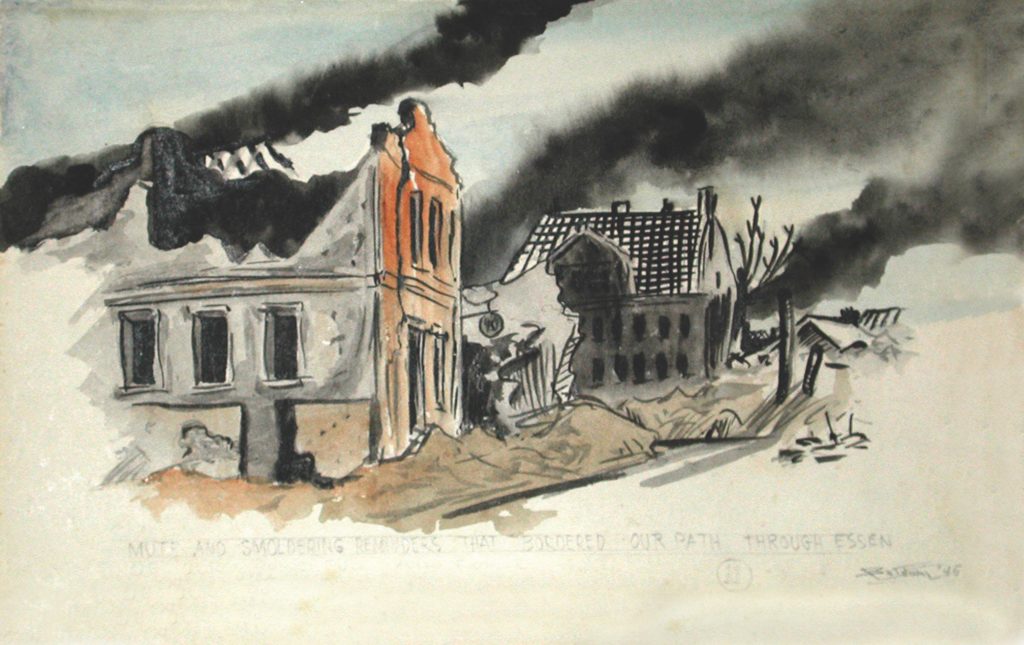
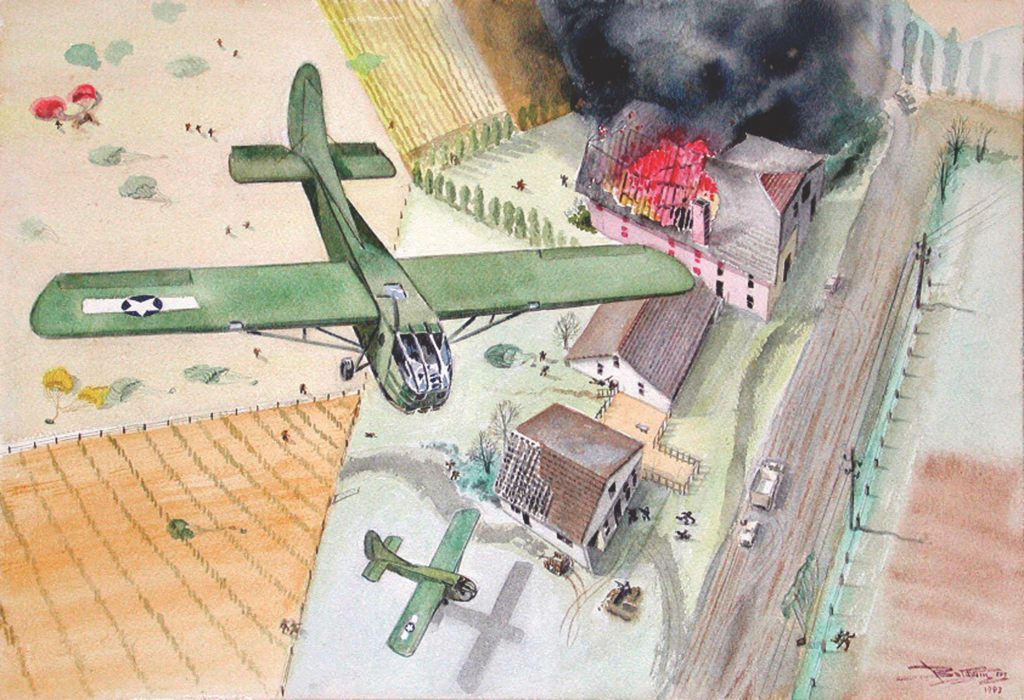
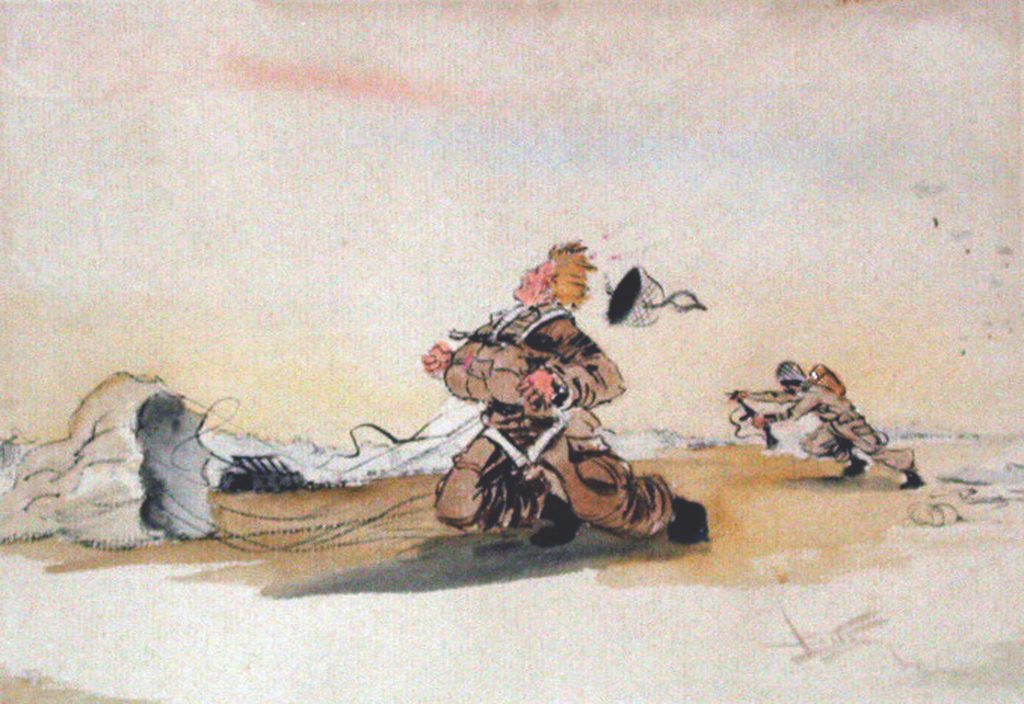
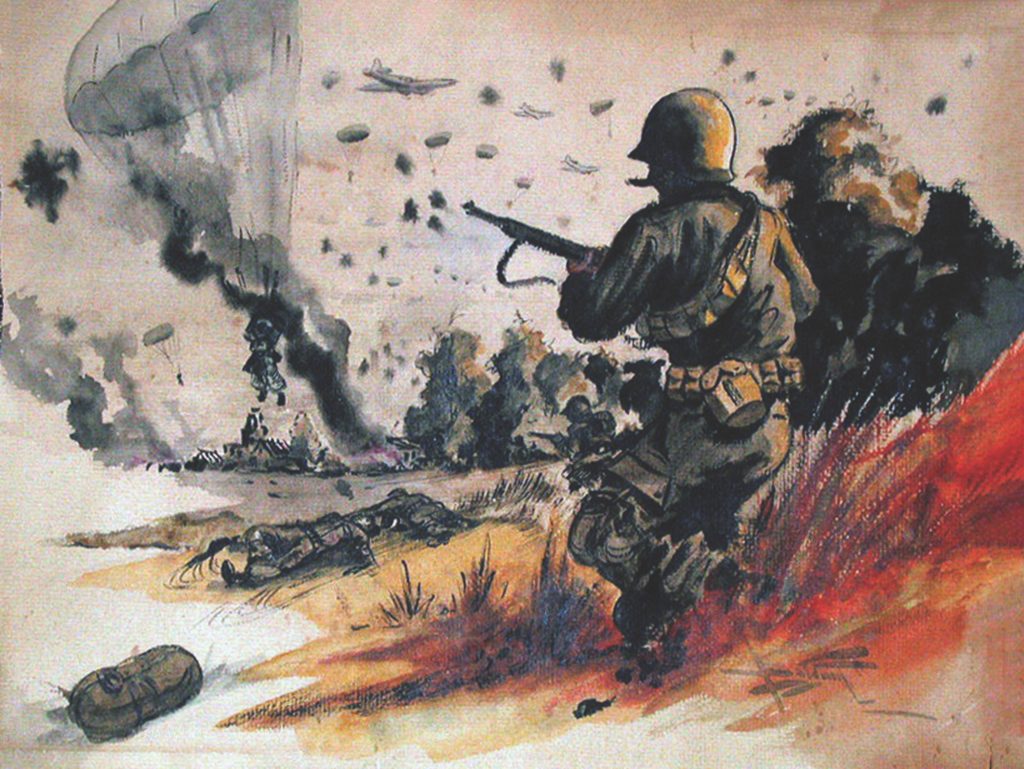
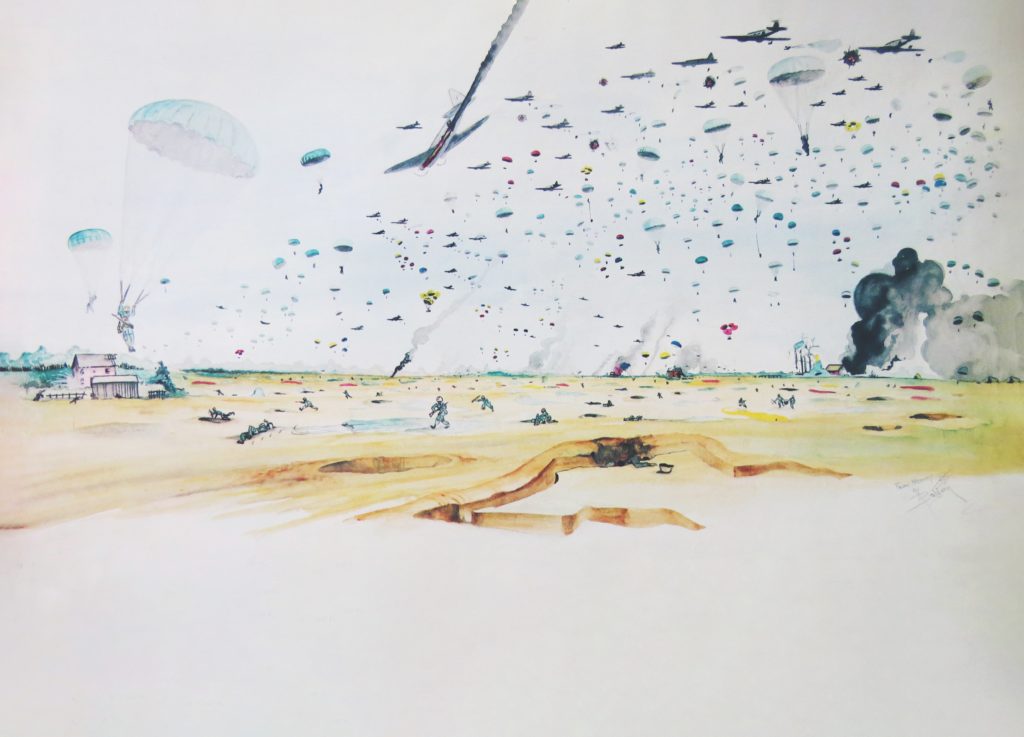
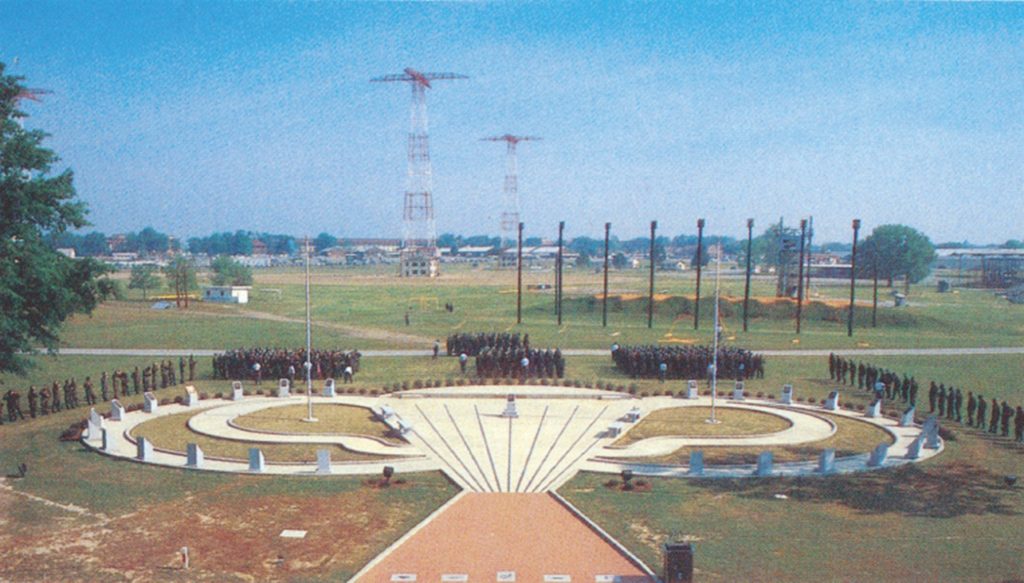
All artwork from the 82nd Airborne Museum collection; reproduced with permission of Mark Baldwin.
This article was published in the August 2021 issue of World War II.

